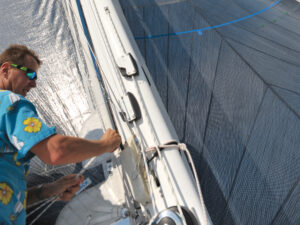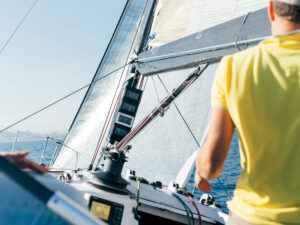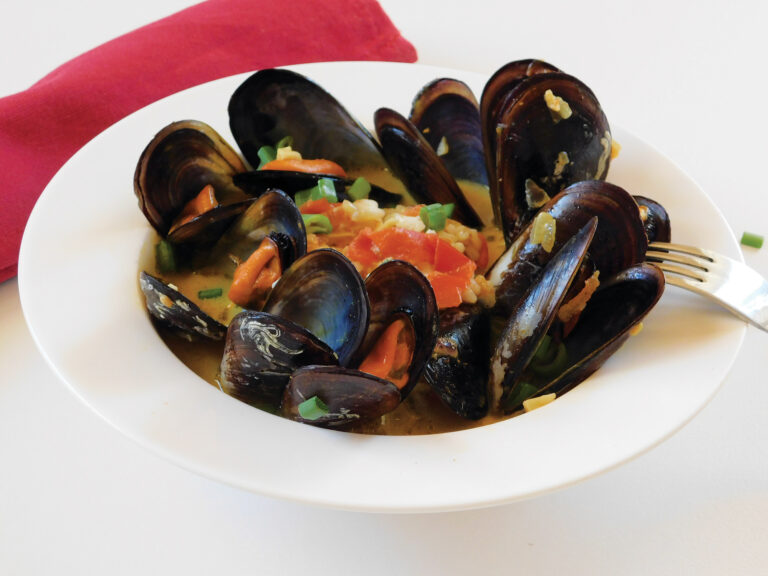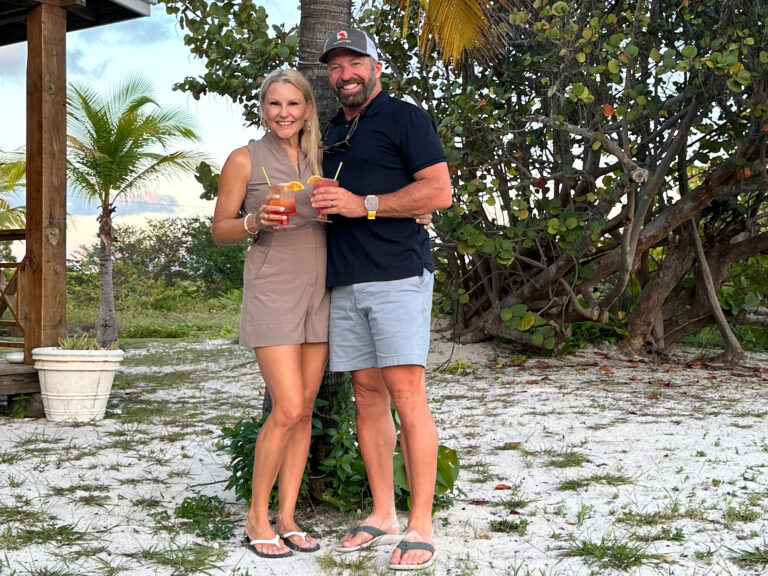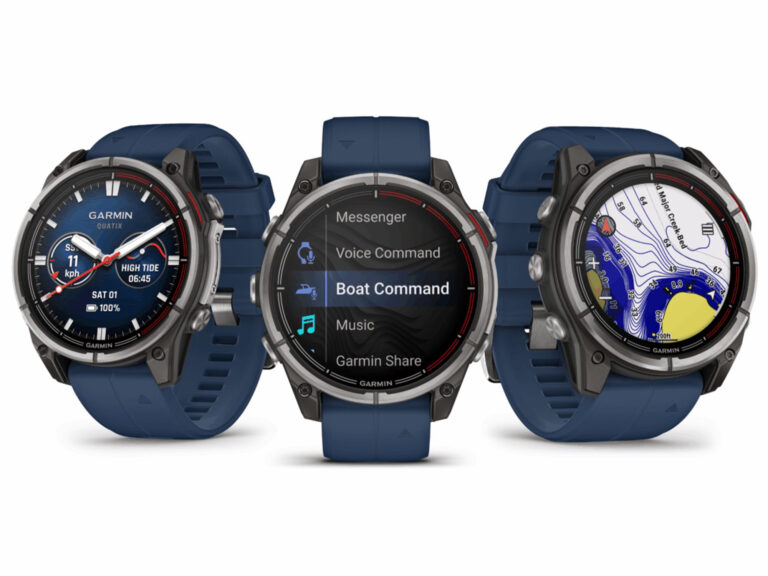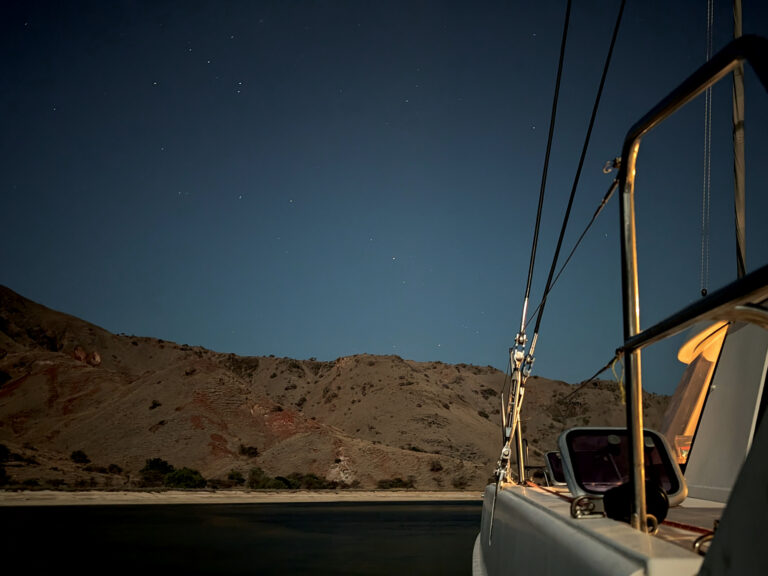
catching lobsters 368
There are lots of ways to catch this delicacy but a lobster snare-a loop at the end of a longish pole-works best for us. (On the Internet, you can find instructions on how to make your own or where to buy one. Just search “lobster snare.”) Using the snare is a little tricky because you need some underwater finesse to remain below the surface and simultaneously hook a metal lasso around the tail of a feisty lobster, but once you get the hang of it, it’s easy. The best reason to use a snare instead of a pole spear or a spear gun is that you don’t kill the lobster. This means you’ll never mistakenly kill either a female with eggs or a lobster that’s undersize. Lobsters always seem a lot bigger underwater than when you get them into the dinghy!
Of course, choosing the right tool and knowing the laws won’t put lobster on your dinner plate. You need to know where to find them. During the day, lobsters dwell in the spaces under rocks and in small caves; they’re happy in dark places from which they can look out while having a couple of different escape routes. To spot the lobster, you must dive down and look up and into the caves. We’ve learned that the larger the cave, the larger the lobster. Often, you need to spend enough time underwater to let your eyes adjust to the darkness; lobsters won’t always be on the edge of the caves, and sometimes they’re hiding a few feet inside. We find lobsters anywhere from two feet below the surface to as deep as we can free dive, about 30 feet. It seems that the deeper we go, the bigger the lobster. Happy diving.



